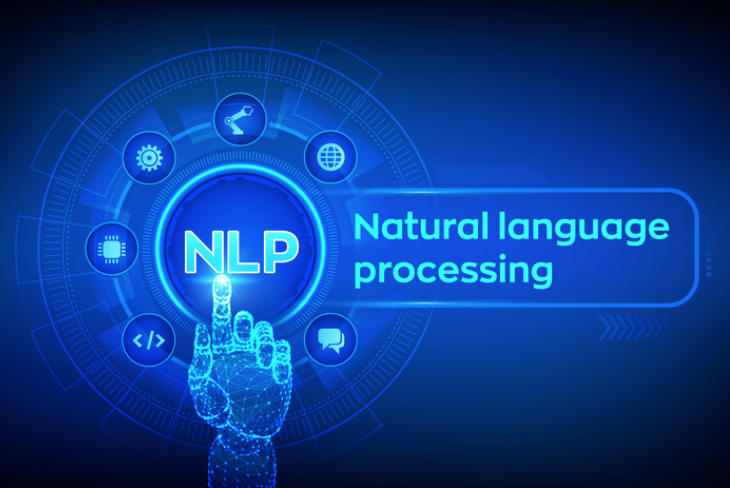- Table of Contents
“Unlock the Power of Language with GPT-3: A Revolutionary Step in AI Technology”
Introduction
GPT-3 is the latest breakthrough in large language models and has been hailed as a major advancement in Natural Language Processing (NLP). Developed by OpenAI, GPT-3 is the world’s most powerful and largest language model. It has been trained on a staggering amount of text data, giving it the ability to generate human-like text without any further input. Moreover, GPT-3 can generate text in response to prompts, allowing it to be used in a variety of applications, from natural language understanding to automated writing. GPT-3 has the potential to revolutionize the way we interact with computers, as it is capable of understanding natural language and can generate text that is indistinguishable from that written by a human.
Exploring the Potential of GPT-3 for Natural Language Processing
The recent release of OpenAI’s GPT-3 has quickly become one of the most exciting developments in the field of Natural Language Processing (NLP). GPT-3 is a powerful language model that can generate human-like text when given a prompt. This has led to speculation about its potential applications in a wide range of NLP tasks. In this paper, we explore the potential of GPT-3 for NLP by first discussing its features and capabilities and then examining how it might be used for various tasks.
GPT-3 is a transformer-based language model that takes in a text prompt and generates a response that is similar to how a human would respond. It is trained on a large corpus of text, allowing it to learn patterns of language usage and to generate human-like text. GPT-3 also includes a large number of parameters which give it the ability to generate text that is more sophisticated and nuanced than its predecessors.
One of the main applications of GPT-3 is text generation. It can be used to generate stories, articles, or other types of text that are indistinguishable from human-written text. GPT-3 can also be used for summarization, question answering, and information retrieval. In addition, GPT-3 has been shown to be effective at generating natural language explanations for machine learning models.
In terms of its applications for NLP tasks, GPT-3 has shown promise in tasks such as question answering and text summarization. GPT-3’s large number of parameters allow it to generate sophisticated responses that are more accurate than those generated by previous models. It can also be used to generate answers to questions that may not have been explicitly asked in the prompt.
GPT-3 has also been used for text classification and sentiment analysis. In text classification, GPT-3 can be used to classify text into different categories, such as sentiment or topic. GPT-3 can also be used for sentiment analysis, which involves determining the sentiment of a text. This can be useful for applications such as customer service, where it can be used to determine the sentiment of customer feedback.
Finally, GPT-3 can be used for natural language generation. This involves generating text that is similar to human-written text. This has a range of potential applications, such as generating dialogue for virtual agents or generating natural language descriptions for machine learning models.
Overall, the potential of GPT-3 for NLP is immense. Its features and capabilities allow it to be used for a wide range of tasks, from text generation to sentiment analysis. As the technology continues to evolve, its potential applications will only increase, making GPT-3 a powerful tool for NLP-related tasks.
How GPT-3 is Revolutionizing Machine Learning
The advent of Generative Pre-trained Transformer 3 (GPT-3) has revolutionized the field of machine learning. Through its ability to generate natural language from a given prompt, GPT-3 has opened up a new era of possibilities for machine learning applications.
GPT-3 is a natural language processing (NLP) system built by OpenAI and released in 2020. It is the largest model of its kind, with over 175 billion parameters, and is capable of producing human-like text. The model is trained on a massive dataset of 45TB of text and can generate text responses to a given prompt.
GPT-3 has significantly improved the state of the art in natural language processing. Its ability to generate human-like text has enabled the development of more sophisticated chatbots, automated summarization systems and question-answering systems. In addition, GPT-3 has also been used to create natural language processing applications such as automatic translation, sentiment analysis and text generation.
The potential of GPT-3 is immense. OpenAI has already released an API that allows developers to use GPT-3 for their own projects, and with continued research and development, GPT-3 is sure to revolutionize the field of machine learning. With its ability to generate natural language from a given prompt, GPT-3 has the potential to become an invaluable asset for any machine learning project.
GPT-3’s Impact on Automated Writing and Content Creation
GPT-3 is an artificial intelligence technology developed by OpenAI that has the potential to revolutionize automated writing and content creation. By utilizing natural language processing, GPT-3 enables machines to generate human-readable text with minimal human input. This technology has the potential to drastically reduce the amount of time and effort required to create content, freeing up more time for creativity and quality assurance.
In addition to its potential for automated writing, GPT-3 also provides a powerful platform for content creation. Through its natural language processing capabilities, GPT-3 can generate ideas, stories, and other forms of content quickly and accurately. This can be extremely beneficial for organizations that need to generate content on a regular basis or in response to rapidly changing events. GPT-3 can also be used to generate content that is tailored to specific audiences or topics, making it even more useful in content creation.
GPT-3 also has the potential to improve the quality of written content. By leveraging its natural language processing capabilities, GPT-3 can help to ensure that content is accurate, factual, and free of errors. This can provide a significant benefit for businesses and organizations that rely on accurate, well-written content to communicate their messages.
Although GPT-3 is still in its early stages, its potential for automated writing and content creation is undeniable. By leveraging its powerful natural language processing capabilities, GPT-3 can provide a wide range of benefits for businesses, organizations, and individuals. By reducing the amount of time and effort required to create content, GPT-3 can free up more time for creativity and quality assurance, while also improving the accuracy and quality of written content. As GPT-3 continues to evolve, its potential to revolutionize automated writing and content creation is likely to become even more apparent.
What Can GPT-3 Do for Businesses?
GPT-3, the latest iteration of OpenAI’s language model, has the potential to revolutionize how businesses interact with their customers and automate mundane tasks. It can generate human-like text, summarizing and paraphrasing documents, answering questions, and even writing creative stories. By leveraging this technology, businesses can provide more personalized customer experiences, automate customer service tasks, and create more efficient workflows.
GPT-3 can be used to automate customer service tasks such as responding to FAQs and customer queries. By using natural-language processing, GPT-3 can quickly understand customer questions and provide accurate and natural-sounding responses. This can help businesses save time and resources by allowing them to delegate these tasks to the AI model.
GPT-3 can also be used to generate personalized content for customers. For example, it can be used to generate product descriptions, tailor marketing messages, and even create personalized stories for customers. This can help companies create meaningful connections with their customers by providing them with content that is relevant and engaging.
Finally, GPT-3 can be used to automate mundane tasks such as transcribing audio, summarizing documents, and validating customer data. This can help businesses reduce manual labor, save time and resources, and increase the accuracy of their data.
Overall, GPT-3 has the potential to revolutionize how businesses interact with customers, automate mundane tasks, and create personalized content. By leveraging this technology, companies can improve customer experiences, save time and resources, and unlock new opportunities.
Understanding GPT-3’s Limitations and How to Overcome Them
GPT-3 is an advanced language model created by OpenAI that has achieved remarkable success in generating human-like text. However, like with any new technology, there are limitations to its capabilities. This article will examine the limitations of GPT-3 and discuss strategies to overcome them.
One of the primary limitations of GPT-3 is its lack of contextual understanding. It can generate coherent text that follows the context of the prompt, but it does not fully grasp the meaning of the text. This means that GPT-3 is unable to distinguish between different meanings of words and phrases and may use them incorrectly. For example, if a prompt contains the phrase “visible light”, GPT-3 may use this phrase to refer to the sun, a lamp, or a light source, instead of understanding that it is referring to the light that is visible to the human eye.
Another limitation of GPT-3 is its lack of creativity. While it is able to generate text that is coherent and follows the context of the prompt, the text is often not creative or original. This means that GPT-3 is not suitable for applications that require originality or creativity, such as writing fiction or creating marketing content.
Finally, GPT-3 is limited in its ability to generate text that is factually accurate or factually supported. Since GPT-3 does not understand the context of the text, it is often unable to generate text that is accurate or supported by facts. This means that GPT-3 should not be used for applications that require factual accuracy, such as legal documents or academic papers.
In order to overcome the limitations of GPT-3, it is important to use the model in combination with other techniques. For example, when using GPT-3 to generate text, it is important to manually review the output to ensure that it is accurate and follows the context of the prompt. Additionally, when generating creative or original content, it is important to use other techniques, such as brainstorming or research, to ensure that the content is unique and factually accurate. Finally, when generating text that requires factual accuracy, it is important to use other techniques, such as fact-checking or expert consultation, to ensure that the text is accurate.
By understanding the limitations of GPT-3 and using other techniques in combination with it, organizations can ensure that they are able to generate the highest quality text from the model.
Conclusion
GPT-3 is the latest breakthrough in large language models and has the potential to revolutionize natural language processing. It has the capability to generate human-like text, which can be used for a variety of tasks such as summarization, question answering, and even translation. While the technology is still in its infancy, the possibilities for its applications are endless. GPT-3 is sure to open up many new opportunities for the field of natural language processing, and it will be exciting to see what new possibilities it brings.


